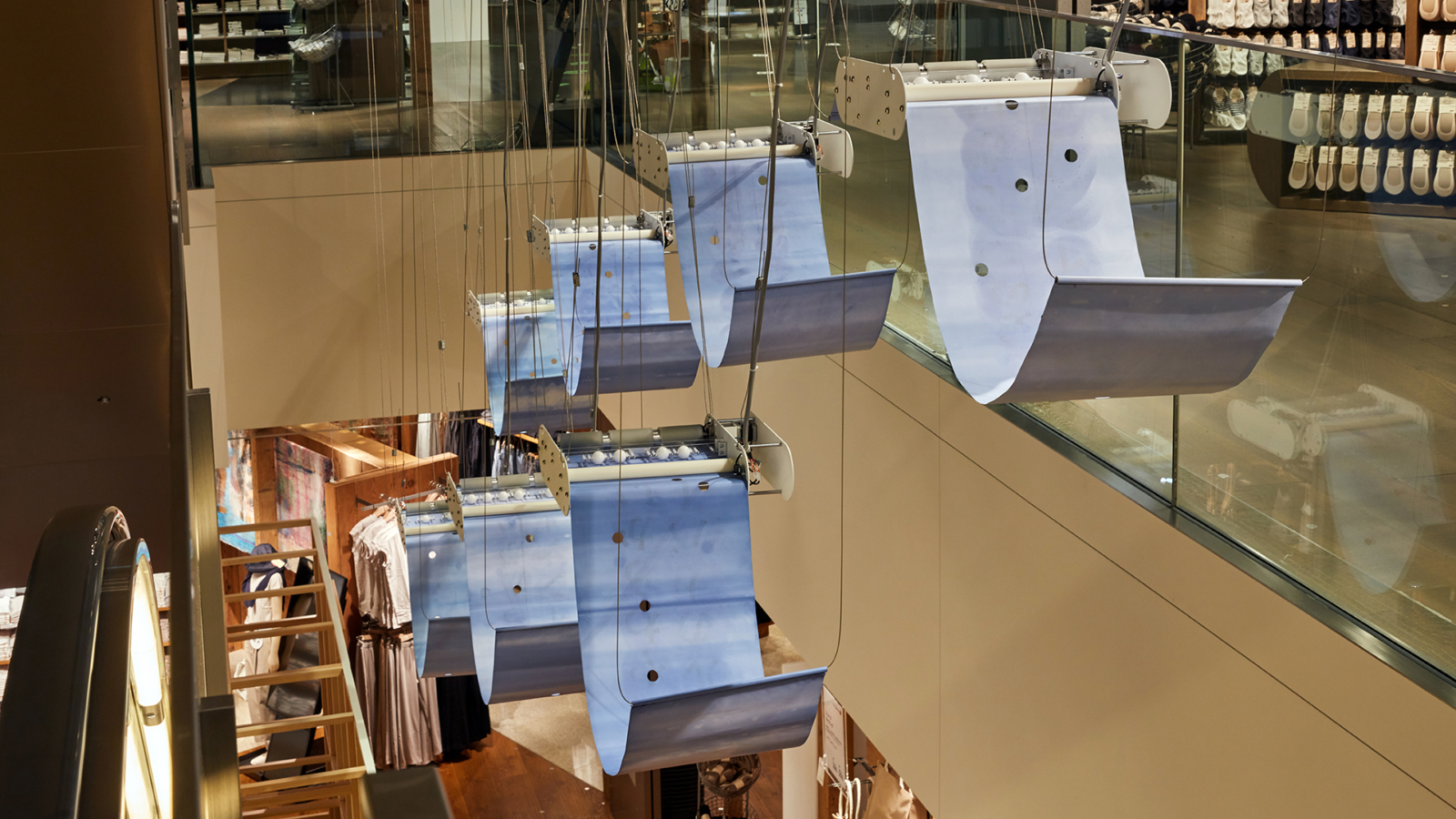
An installation work Streamphone which is inspired by a traditional dying process, is a beautiful sound art work with recycled materials. This work, made by invisi dir, had just showed in the exhibition Life in Art Exhibition at MUJI Ginza. Kenichi Takahana of invisi dir talked to us about the process of creating this work using STEP400.
About the work
- Could you tell us what kind of work this is. Is this moving cloth?
This is a tarpaulin banner that was originally used at the MUJI store where the exhibition was held, which was re-dyed and reused with holes punched and other processing. The tarpaulin moves around, and the holes in the tarpaulin make sounds like a music box. There are a total of seven of these hanging from the ceiling of the atrium. The music is composed based on the movement of the tarpaulins and its spatial arrangement. - Are the holes detected by a sensor?
No, there is an xylophone installed on the back of the chassis, and the ball rolling on the cloth physically strikes the xylophone as it falls into the hole.
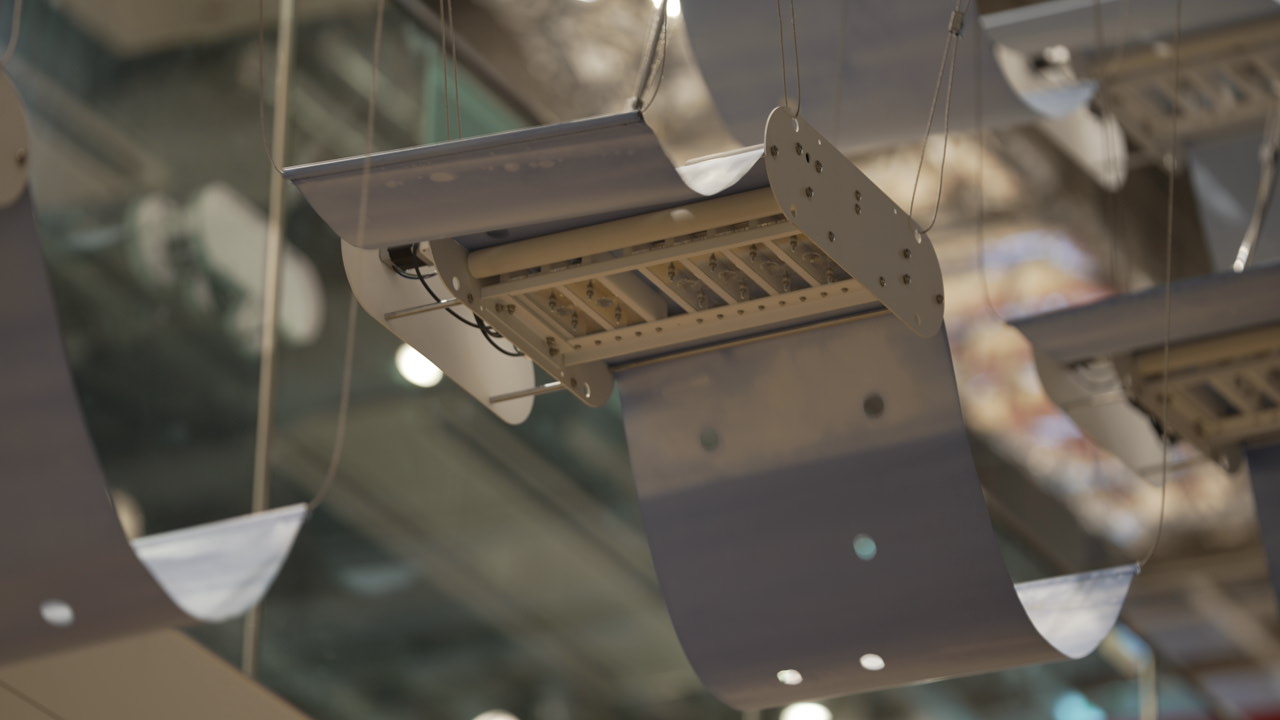
- Oh, it' s physically an xylophone! What's going on with this ball part? There is only a very small distance between the curtain and the xylophone, isn't there?
This is the documentation of the early experiments. In principle, the ball falls a little at the position of the hole like this to make the sound. The drop is only about 5 mm, but it is enough to make the sound. So when the tarpaulin is moved, it will ring by itself.
- I see! We tend to think too difficult in these kind of things, but I really like this simple mechanism.
System
- This tarpaulin curtain is driven by a stepper motor.
Correct. The drive part is made up of a combination of NEMA17 / 1.6A motors and rollers. Two STEP400s are hung from batons on the ceiling, and the home, limit sensor, and motor wires extend to them.
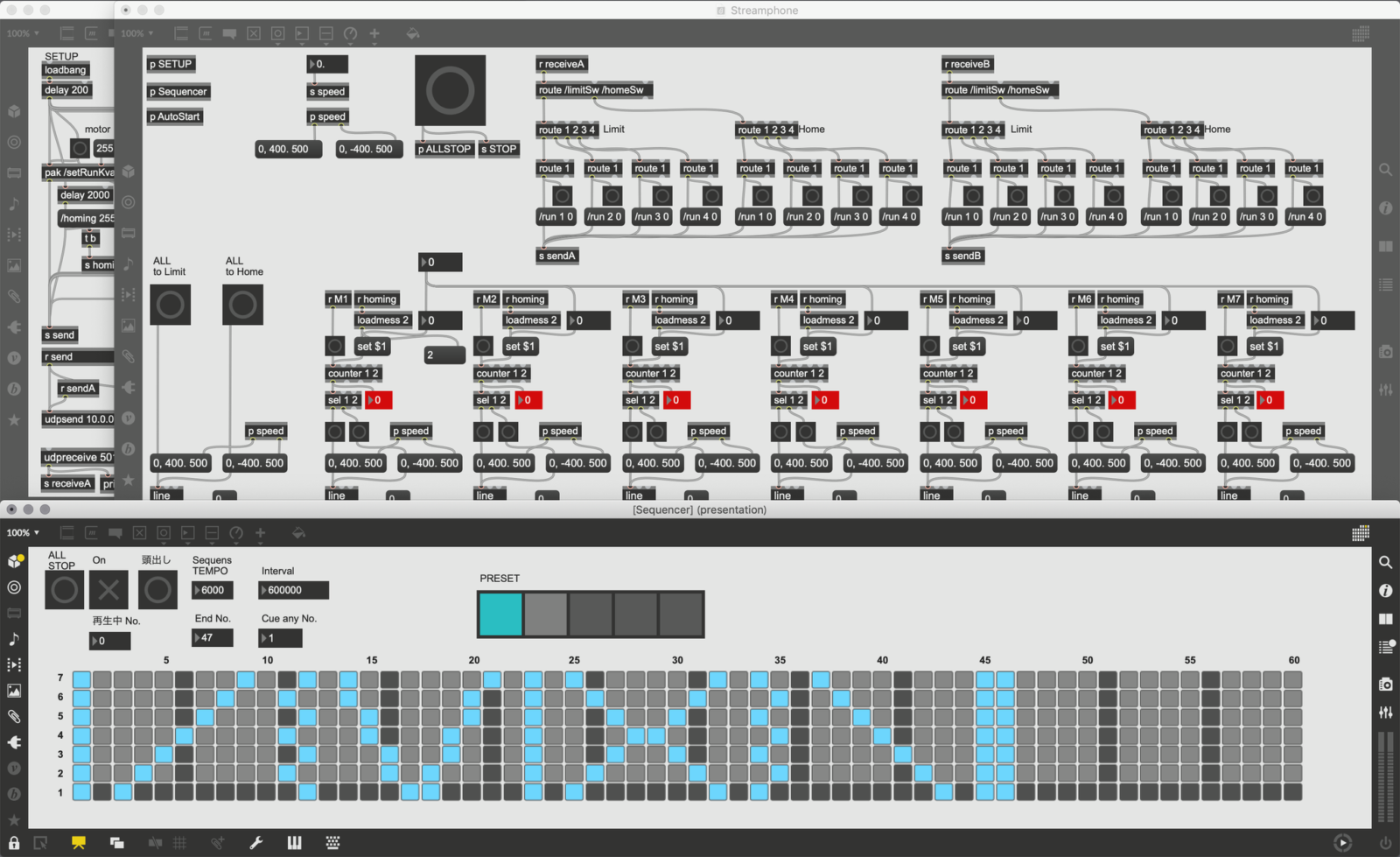
The Cycling'74 Max on a PC is the master of the timeline and sends OSC to STEP400. The processing in the Max is very simple: it triggers the motors according to the timeline, stops them when the sensors respond at each end of the curtain, and reverses the rotation the next time it runs.
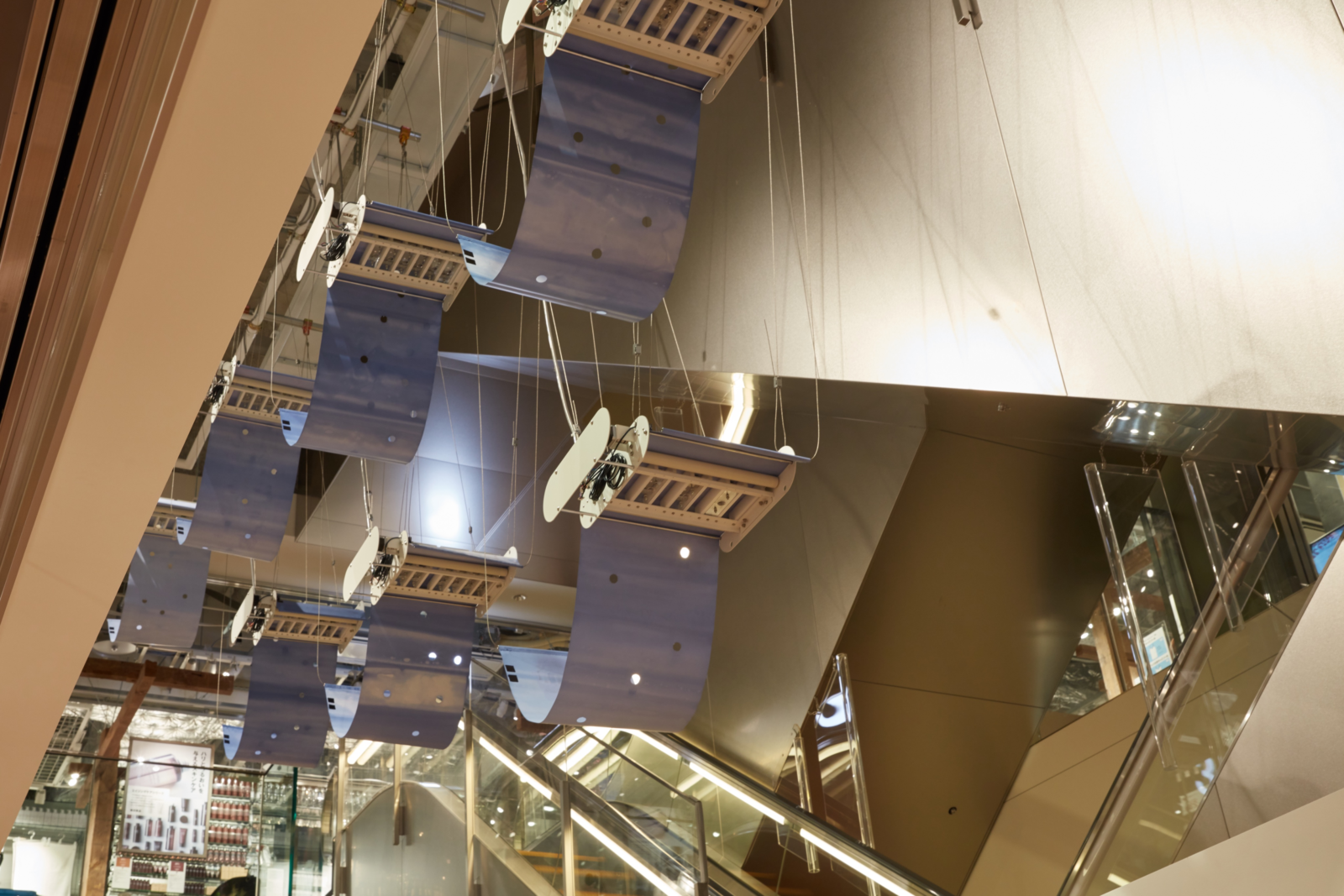
- Were there any difficulties in using STEP400?
At the beginning, I had to set up the KVAL properly to get it to start running, so I was a little stuck there. But once it started working, it was no problem at all. In the exhibition, the boards are on the baton, so they are not easily accessible, but we did not have to take them down due to problems.
- It's true that KVAL is a part that requires some trial and error, since the setting value varies depending on the motor and the supply voltage. How do you detect both ends of the curtain?
A square hole is drilled in the end of the tarpaulin, where the photoelectric sensor reacts. There are holes and dedicated sensors at the right and left ends of the tarpaulin, respectively, which are connected to the HOME and LIMIT terminals of STEP400.
Mechanism design
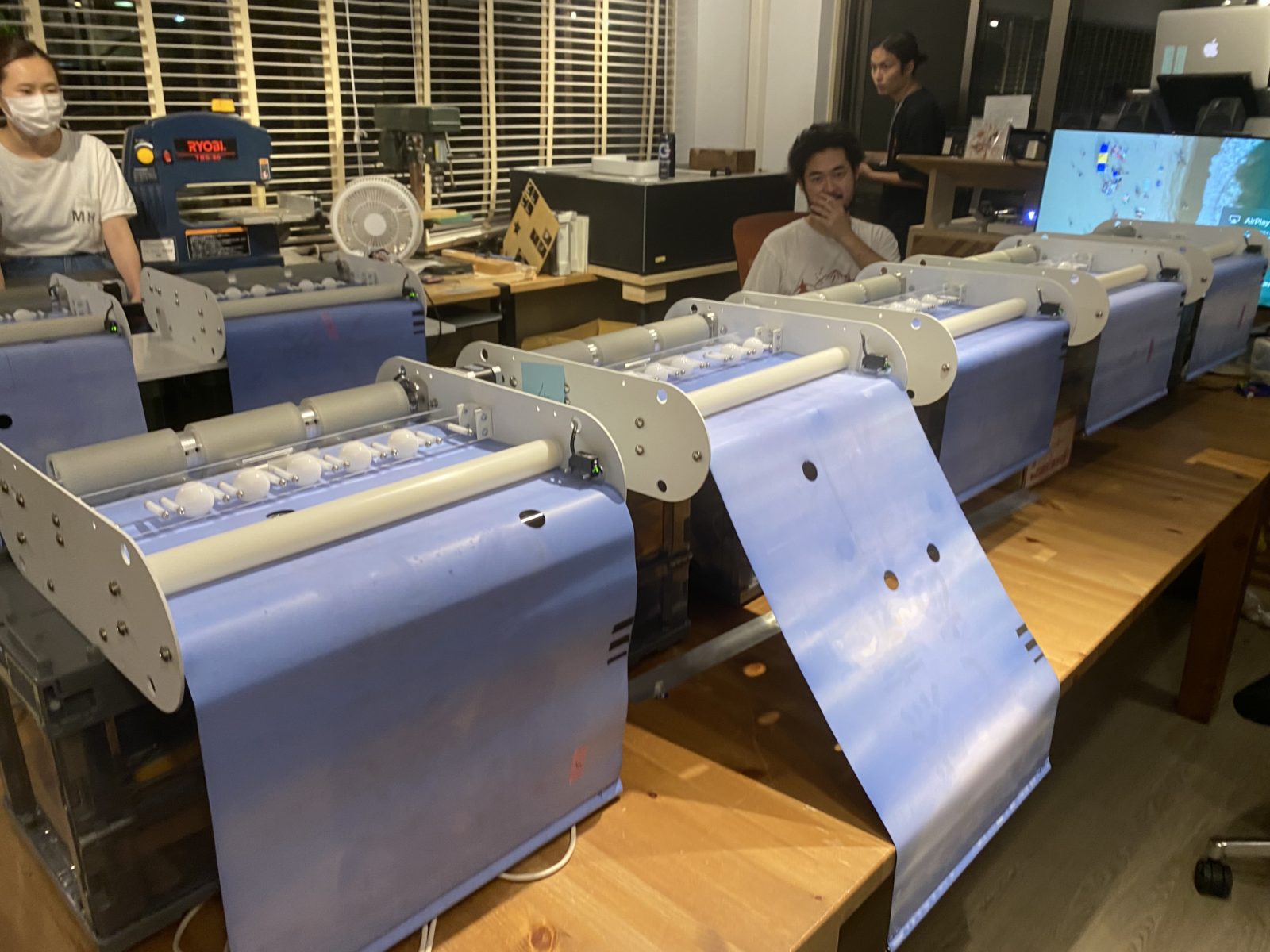
- I would like to ask how you designed the mechanism. Is this white part on the side made of resin?
This is sheet metal, and we drew a drawing based on the results of the trial production and had it made at our subcontractor. Most of the mechanical parts were procured from MISUMI, and shafts were also cut to a specified length by them.
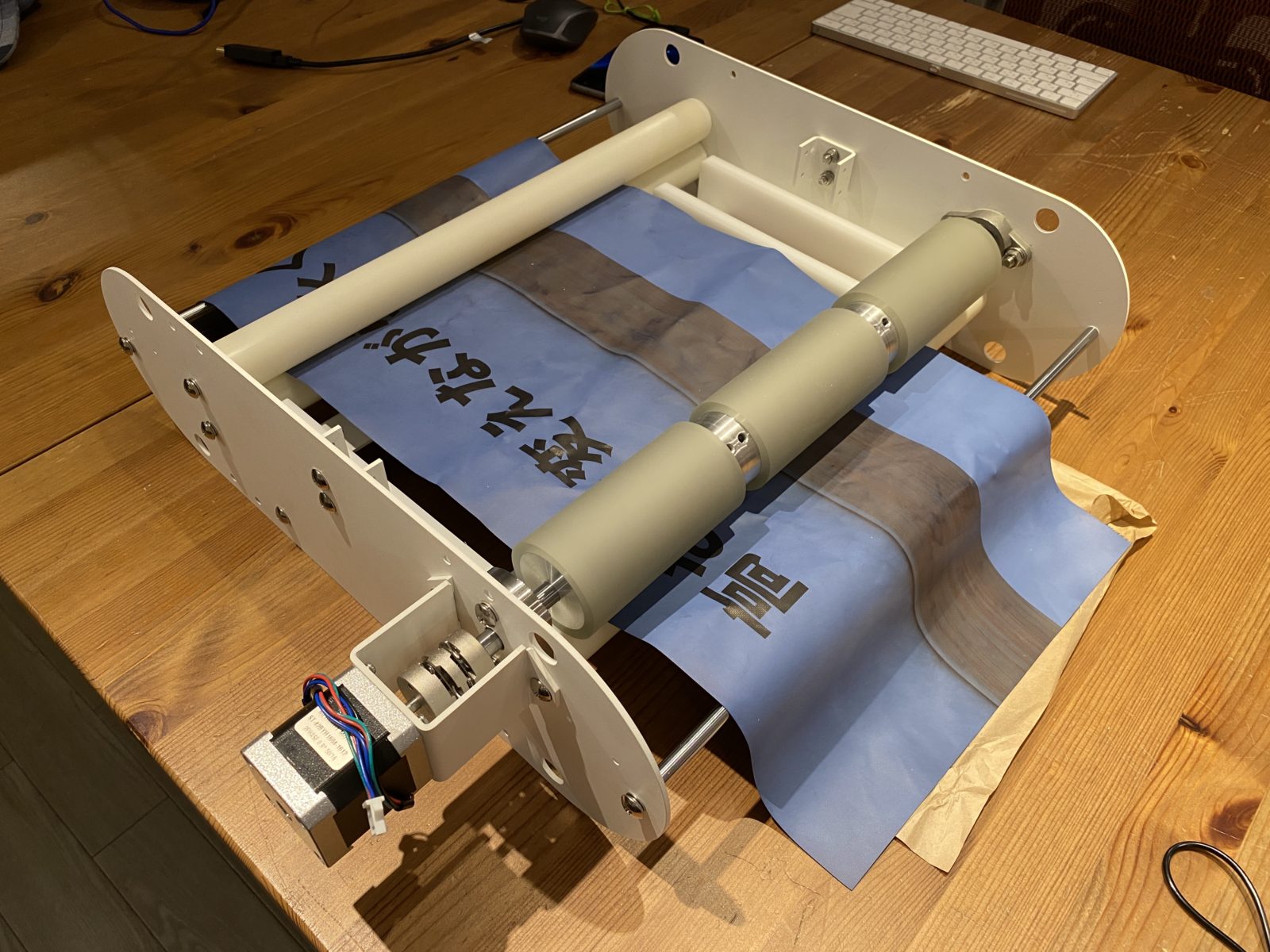
- I like the fact that they can cut and deliver a wide variety of parts. They also can fabricate sheet metals and milled parts, and I found it to be more reasonable than I had expected and quite useful.
The production schedule was very tight this time, so without this kind of web service, I might not have been able to finish in time!
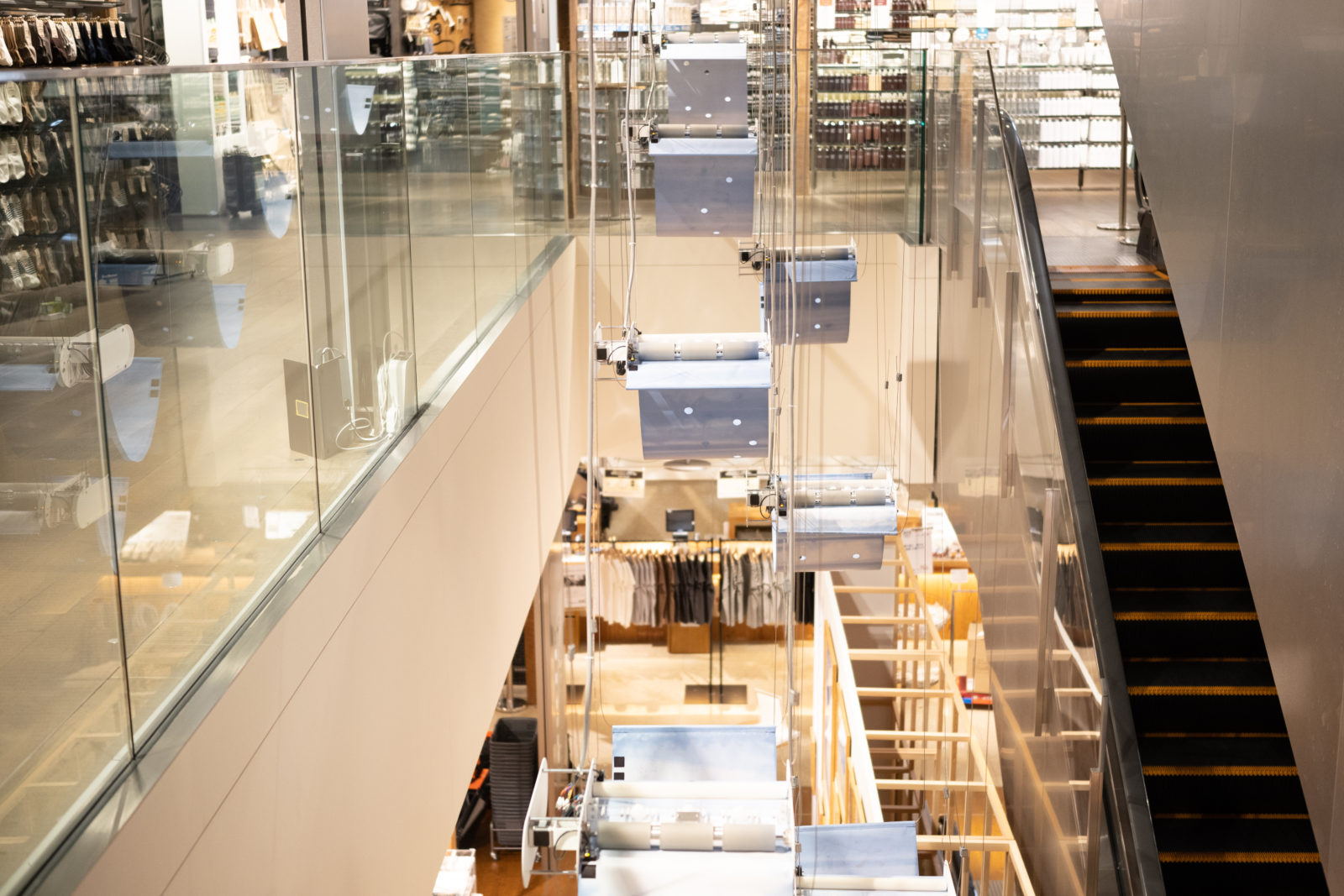
Future Possibilities
- Finally, do you have any plans for the future?
I think this structure can be used universally. For example, you can attach the xylophone in two places on the long curtain and play it in two places, or if you modify the part that holds the ball down, you can install it in a vertical position, and I think there are many possibilities.
Credits
Kenjiro Matsuo
Kenichi Takahana
Lin KaiTing
Yuichi Nakamura
Tsuyoshi Otabe
Kouhei Kanomata
Keita Miyashita